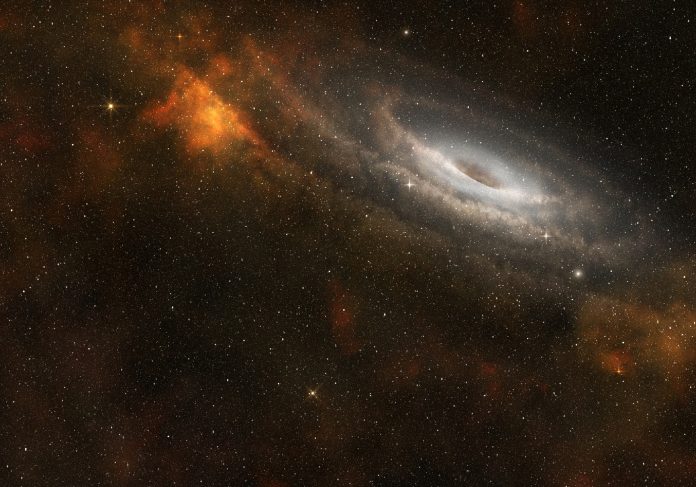Researchers at the Research Center for the Early Universe (RESCEU) and Kavli Institute for the Physics and Mathematics of the Universe (Kavli IPMU, WPI) at the University of Tokyo have made a significant breakthrough in our understanding of the early universe
By applying quantum field theory, a framework typically used to study the very small, to the early universe, they concluded there are far fewer miniature black holes than previously thought.
PBH formation
Primordial black holes (PBHs), believed to have formed shortly after the Big Bang, have been considered strong candidates for dark matter, the substance that makes up most of the universe’s mass.
“They are interesting for other reasons too, as since the recent innovation of gravitational wave astronomy, there have been discoveries of binary black hole mergers, which can be explained if PBHs exist in large numbers.” said graduate student Jason Kristiano. Despite being theoretically abundant, direct observation of PBHs has remained inaccessible.
Kristiano, along with his supervisor Professor Jun’ichi Yokoyama, director of Kavli IPMU and RESCEU, examined various models for PBH formation. They found that the leading models did not align with observations of the cosmic microwave background (CMB), the remnant radiation from the Big Bang. If a theory disagrees with solid observations, it cannot be fully accurate.
Using quantum field theory
The researchers used a new approach to adjust the leading model of PBH formation during cosmic inflation, a rapid expansion of the universe just after the Big Bang. This adjustment better matches current observations and can be further tested with upcoming data from gravitational wave observatories worldwide.
“At the beginning, the universe was incredibly small, much smaller than the size of a single atom,” said Yokoyama. “Cosmic inflation rapidly expanded that by 25 orders of magnitude. At that time, waves traveling through this tiny space could have had relatively large amplitudes but very short wavelengths.”
Yokoyama explained that coherent groups of early short waves could reshape much larger waves, an idea that helps align the theory with current observations. This suggests that early small-scale fluctuations could impact the larger-scale fluctuations seen in the CMB, altering our understanding of the universe’s structure.
This new model implies there should be far fewer PBHs than previously thought, questioning the idea that they are a major component of dark matter. However, the world’s gravitational wave observatories, LIGO in the U.S., Virgo in Italy, and KAGRA in Japan, are currently on a mission to observe the first small black holes, likely PBHs. These observations will provide crucial evidence to refine the team’s theory further.
Editor’s Recommended Articles






